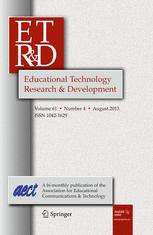Digital native fallacy: Teachers still know better when it comes to using technology

Members of today's younger Net Generation aren't more tech savvy than their teachers just because they were born into a world full of computers. In fact, if it weren't for the coaxing and support of their educators, many students would never use their electronic devices for more than playing games or listening to music. So says Shiang-Kwei Wang of the New York Institute of Technology in the US, who led a study on how middle school science teachers and their students use technology inside and outside the classroom. The findings appear in the journal Educational Technology Research & Development.
Wang and her team investigated the technology skills of 24 science teachers and 1,078 middle school students from 18 different schools in two US states. The students surveyed are considered third-generation digital natives, for whom technology access and ownership has become the norm.
Both teachers and students were found to have rich outside-of-school technology experience, but students were not tech savvy in the classroom. Most were not very familiar with information and communication technology or even Web 2.0 tools designed to make information production and sharing easier. Their teachers, on the other hand, depended much more on using technology to solve daily problems, to improve productivity, and as learning aids.
Wang says that this disconnection cannot be linked to how old teachers are or what kind of technology skills they have. The problem rather lies with how little opportunity students get to practice technology beyond pursuing personal interests, such as entertainment. Much depends on how teachers require their students to make use of new technologies, and the ways that these technologies are integrated into teaching. School-related tasks usually require students to use technology limited to researching information and writing papers. Rarely do teachers provide opportunities to allow students to use technology to solve problems, enhance productivity, or develop creativity.
The findings reinforce directions currently being proposed to reduce the gap between how technology is used inside and outside the school setting. High-quality training should be provided to teachers on how they can integrate content-specific technology into their curricula – and how to teach their students how to use technology more effectively in the process.
"School-age students may be fluent in using entertainment or communication technologies, but they need guidance to learn how to use these technologies to solve sophisticated thinking problems," says Wang. "The school setting is the only institution that might create the needs to shape and facilitate students' technology experience. Once teachers introduce students to a new technology to support learning, they quickly learn how to use it."
More information: Wang, S-K. et al. (2014). An Investigation of Middle School Science Teachers' and Students' Use of Technology Inside and Outside of Classrooms: Considering whether digital natives are more technology savvy than their teachers, Educational Technology Research & Development. DOI: 10.1007/s11423-014-9355-4
Provided by Springer


















